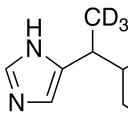RNA Sequencing and Coexpression Analysis Reveal Key Genes Involved in α-Linolenic Acid Biosynthesis in Perilla frutescens Seed.
Ключевые слова
абстрактный
Perillafrutescen is used as traditional food and medicine in East Asia. Its seeds contain high levels of α-linolenic acid (ALA), which is important for health, but is scarce in our daily meals. Previous reports on RNA-seq of perilla seed had identified fatty acid (FA) and triacylglycerol (TAG) synthesis genes, but the underlying mechanism of ALA biosynthesis and its regulation still need to be further explored. So we conducted Illumina RNA-sequencing in seven temporal developmental stages of perilla seeds. Sequencing generated a total of 127 million clean reads, containing 15.88 Gb of valid data. The de novo assembly of sequence reads yielded 64,156 unigenes with an average length of 777 bp. A total of 39,760 unigenes were annotated and 11,693 unigenes were found to be differentially expressed in all samples. According to Kyoto Encyclopedia of Genes and Genomes (KEGG) pathway analysis, 486 unigenes were annotated in the "lipid metabolism" pathway. Of these, 150 unigenes were found to be involved in fatty acid (FA) biosynthesis and triacylglycerol (TAG) assembly in perilla seeds. A coexpression analysis showed that a total of 104 genes were highly coexpressed (r > 0.95). The coexpression network could be divided into two main subnetworks showing over expression in the medium or earlier and late phases, respectively. In order to identify the putative regulatory genes, a transcription factor (TF) analysis was performed. This led to the identification of 45 gene families, mainly including the AP2-EREBP, bHLH, MYB, and NAC families, etc. After coexpression analysis of TFs with highly expression of FAD2 and FAD3 genes, 162 TFs were found to be significantly associated with two FAD genes (r > 0.95). Those TFs were predicted to be the key regulatory factors in ALA biosynthesis in perilla seed. The qRT-PCR analysis also verified the relevance of expression pattern between two FAD genes and partial candidate TFs. Although it has been reported that some TFs are involved in seed development, more direct evidence is still needed to verify their function. However, these findings can provide clues to reveal the possible molecular mechanisms of ALA biosynthesis and its regulation in perilla seed.



